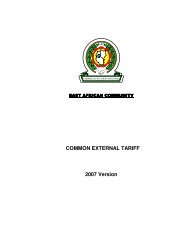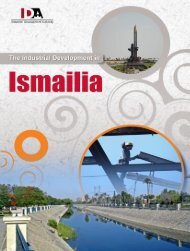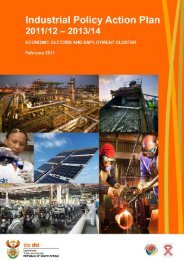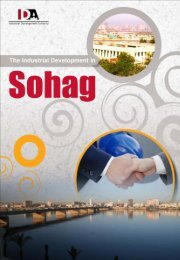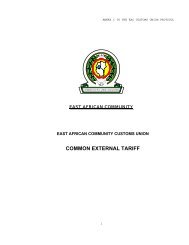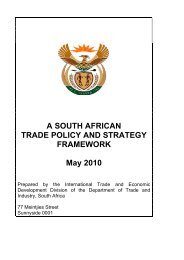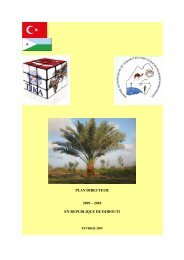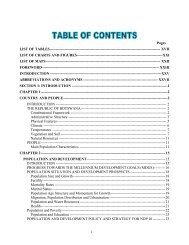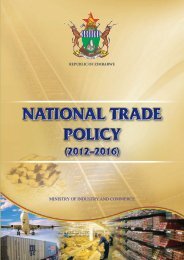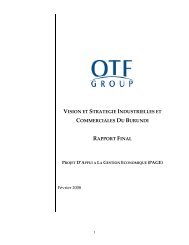Namibia Vision 2030 - Ministry of Environment and Tourism
Namibia Vision 2030 - Ministry of Environment and Tourism
Namibia Vision 2030 - Ministry of Environment and Tourism
Create successful ePaper yourself
Turn your PDF publications into a flip-book with our unique Google optimized e-Paper software.
structure (transport <strong>and</strong> communications network, housing, electricity, <strong>and</strong> water),<br />
as well as employment opportunities in both rural <strong>and</strong> urban areas. Hence, rural <strong>and</strong><br />
urban linkages are functional, <strong>and</strong> serve to promote overall regional development in<br />
<strong>Namibia</strong>.<br />
The factors affecting internal migration <strong>and</strong> urbanization remain largely unchanged<br />
over the <strong>Vision</strong> <strong>2030</strong> period. <strong>Namibia</strong> continues to uphold the constitutional provisions<br />
for international migration, as well as adhering to appropriate immigration<br />
policies.<br />
3.2.3 Population Policy <strong>and</strong> Management<br />
The National population policy is well known <strong>and</strong> understood by all, <strong>and</strong> a programme<br />
<strong>of</strong> action for its implementation has been effectively launched. The existing<br />
institutional framework for the implementation <strong>of</strong> the national population policy<br />
<strong>and</strong> the HIV/AIDS Strategic Plans, is strong <strong>and</strong> adequate resources are made available<br />
to their programmes. The programmes <strong>of</strong> population policy are implemented,<br />
jointly, at all levels (national, regional, community) by all the sectors (government,<br />
private <strong>and</strong> civil society).<br />
3.2.4 Population information<br />
The institutions that are responsible for generating population <strong>and</strong> socio-economic<br />
data <strong>and</strong> information (including the population <strong>and</strong> housing census; registration <strong>of</strong><br />
births, deaths, marriages; sector specific surveys; etc) for development planning are<br />
strong <strong>and</strong> continue to operate efficiently. There is no shortage <strong>of</strong> resources (personnel,<br />
money, materials) for their operations, <strong>and</strong> they enjoy the support <strong>of</strong> the public,<br />
for their work. <strong>Namibia</strong> has up-to-date data on the population, the economy <strong>and</strong><br />
society, for planning <strong>and</strong> programme-management.<br />
In terms <strong>of</strong> the provision <strong>of</strong> relevant data, <strong>Namibia</strong> has a significant pool <strong>of</strong> population<br />
<strong>and</strong> development experts, utilizing the wealth <strong>of</strong> accurate, reliable <strong>and</strong> current<br />
information on aspects pertaining to its population, in relation to health <strong>and</strong> development<br />
for development planning <strong>and</strong> programme management.<br />
Adequate capacity for training <strong>and</strong> research in population <strong>and</strong> development is created<br />
in <strong>Namibia</strong> through the tertiary institutions, undergraduate <strong>and</strong> post-graduate<br />
programmes, <strong>and</strong> through staff <strong>and</strong> student-exchange programmes, particularly with<br />
established <strong>and</strong> renowned institutions elsewhere. The national research <strong>and</strong> development<br />
programme continues to identify <strong>and</strong> fill gaps in knowledge, <strong>and</strong> provides<br />
22



